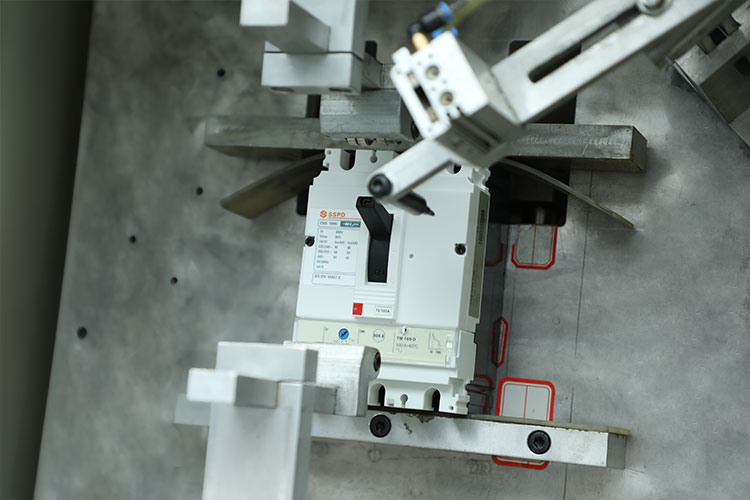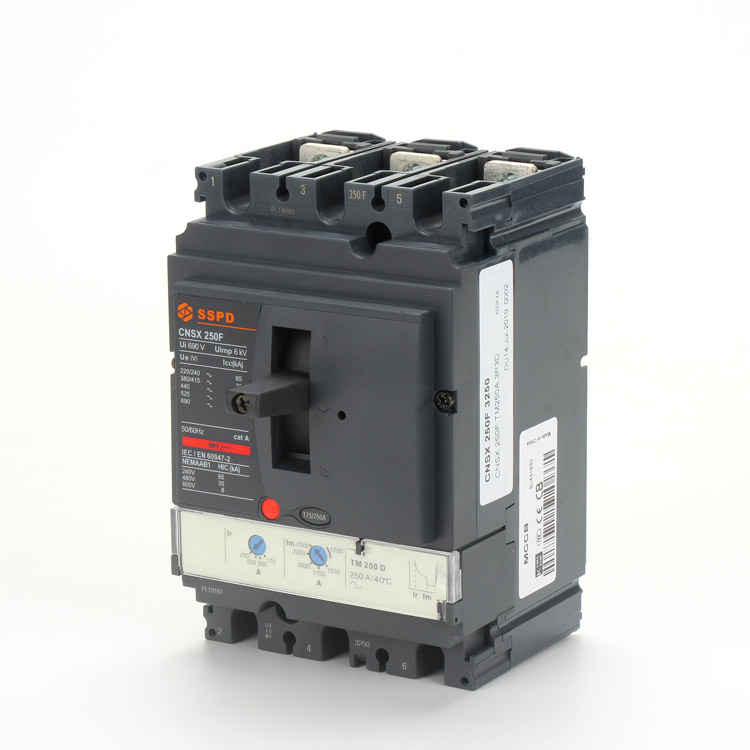
A:Position indicator(positive contact indication)
B:spring status indicator(charged,discharged)
C:manual spring-charging lever
D:Keylock device(optional)
E:I(ON)pushbutton
F:O(OFF)pushbutton
G:manual/auto mode selection switch.The position of this switch can be indicated remotely
H:operation counter(CNSX400-630)
When equipped with amotor-mechanism module,CNSX circuit breakers feature every high mechanical endurance as well as easy and sure operation:
- all circuit-breakerindications andinformation remain visible and accessible, including trip-unit settingsand indications
- suitability for isolation is maintained and padlocking remains possible
- double insulation of the front face.
A specific motor mechanism is required for operation via the communication function. This communicating motor mechanism must be connected to the BSCM module to receive the opening and closing orders. Operation is identical to that of a standard motor mechanism.
Applications
- Local motor-driven operation, centralised operation, automatic distribution control.
- Normal/standby source changeover or switching to a replacement source to ensure availability or optimise energy costs.
- Load shedding and reconnection.
- Synchrocoupling.
Operation
The type of operation is selected using the manual/auto mode selection switch .A transparent, lead-seal cover controls access to the switch.
Automatic
When the switch is in the “auto” position, the ON/OFF (I/O) buttons and the charging lever on the mechanism are locked.
Circuit-breaker ON and OFF controlled by two impulse-type or maintained signals. “Automatic spring charging following voluntary tripping (by MN or MX), with standard wiring.”
Mandatory manual reset following tripping due to an electrical fault.
Manual
When the switch is in the “manual” position, the ON/OFF (I/O) buttons may be used.
A microswitch linked to the manual position can remote the information.
- Circuit-breaker ON and OFF controlled by 2 pushbuttons I/O.
- Recharging of stored-energy system by pumping the lever 8 times.
- Padlocking in OFF position.
Installation and connections
All installation (fixed, plug-in/withdrawable) and connection possibilities are maintained.
Motor-mechanism module connections are made behind its front cover to integrated terminals, for cables up to 2.5 mm².








